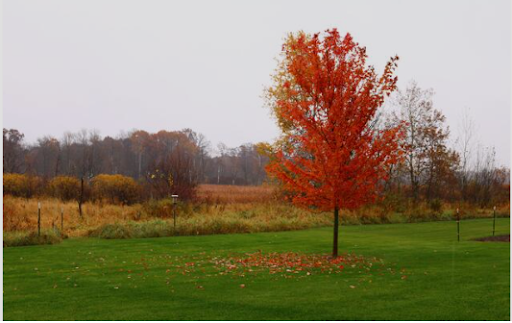
Don’t let your landscape become a delicious winter wildlife buffet!
Start now to protect your trees, shrubs, and evergreens from winter damage caused by deer, rabbits, mice, and voles when they feed on twigs, bark, leaves, and stems. Animals may damage trees and shrubs by chewing through the bark, often eating until little remains. The best overall strategy is to use a combination of physical barriers to reduce the opportunities for these pests to reside in your yard.
Construct Physical Barriers
Adding a physical barrier is the best way to reduce damage to your trees, shrubs, and evergreens. They should be installed in late fall, left up throughout the winter, and removed only when things are greening up so the animals have other things to eat.
Rabbits, mice, and voles will be deterred by using fencing that is a minimum of 4 feet tall with small ¼ inch square openings, which are buried a few inches into the ground to prevent animals from burrowing under the fence. The fence should be secured by anchoring it with landscape staples, stakes, or poles.

To avoid deer damage, you must protect trees and shrubs from nibbling on twigs, buds, and trunks and damage from rubbing and scraping. White plastic tree guards will protect the tree trunk. Make sure to account for snow depth when determining the height of your tree guard. Keep in mind that deer fencing should be a minimum of 8 feet tall. Deer can clear fencing up to 12 feet tall. Make sure it is well constructed and anchored, or the deer may break down your fence.
To protect evergreens, you will want to wrap them in burlap. This offers protection from deer damage, salt damage, ice damage and sun damage. Remember to water your evergreens before you wrap them. To wrap your evergreen, use three stakes in a triangle. Drive the stakes into the ground. When you have a triangle around your tree, start wrapping the burlap around the stakes. Secure the burlap with zip ties as you wrap. The wrap should be almost as tall as the tree and be sturdy enough to withstand winter winds.
Repellants
You may also use repellants to help control deer and rabbit damage in your yard. They deter animals from feeding because of their smell or taste. While repellents may be a more economical solution than fencing, they tend to not work as well over the winter months as multiple applications are needed. You can spray or paint it on trees and shrubs. The effectiveness of repellents is considerably reduced during times of short food supply as deer will eat what is available, treated or not, to stay alive.
No Vacancies
Here are three steps you can take to help eliminate these critters living on your property and feasting on your landscaping during the long winter months.
First, eliminate protective cover. Burn or haul away branches after pruning. Create a composting area for your fall leaves with fencing, or use them as mulch around your plants. Second, block off any areas that critters could live in, under your deck or holes in out buildings. Finally, cut down and remove any vegetation close to young trees. This eliminates protective cover for mice and voles who may feast on tree trunks and stems.
A few protective steps will go a long way in keeping your landscape plants looking their very best once spring arrives and for years to come.
